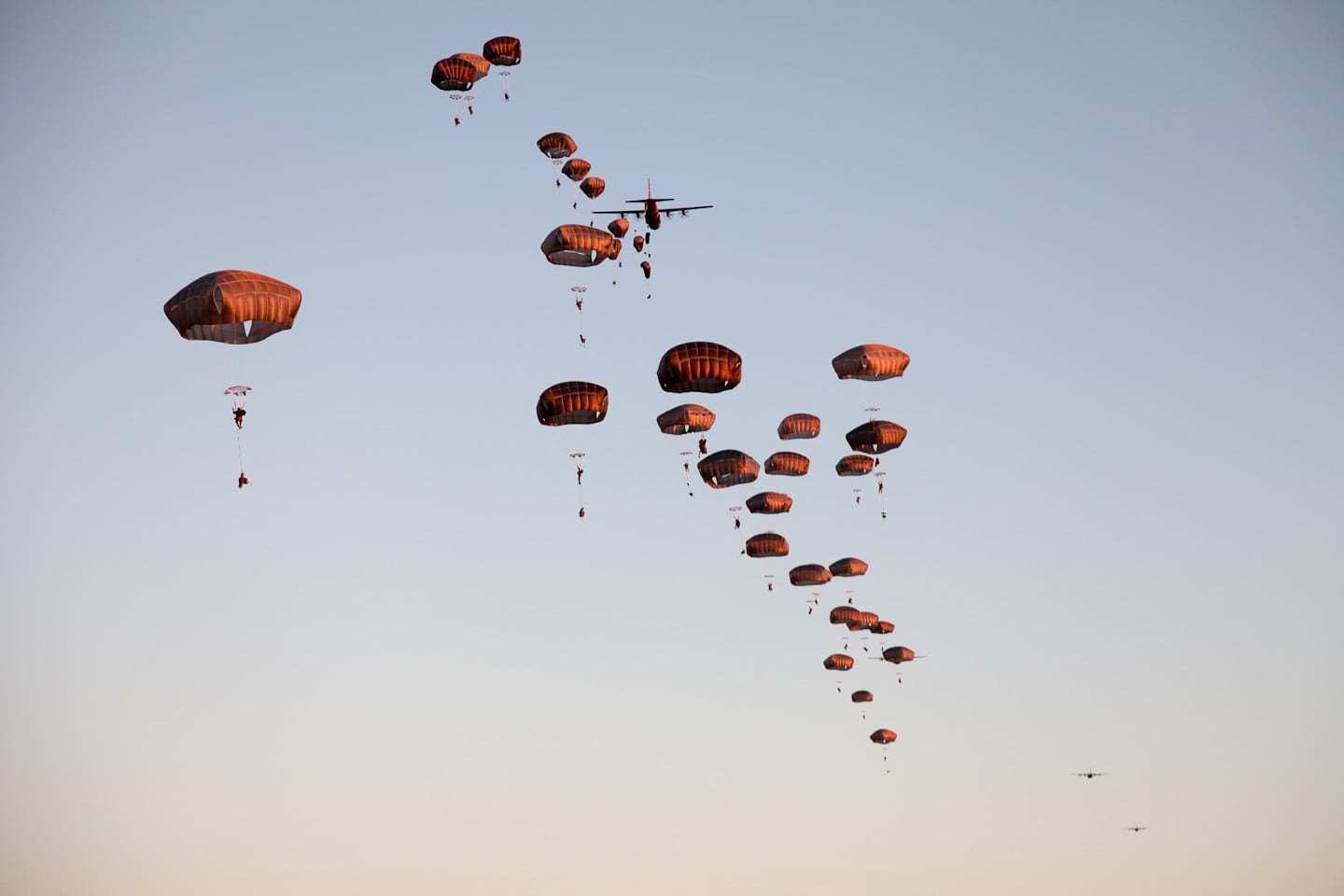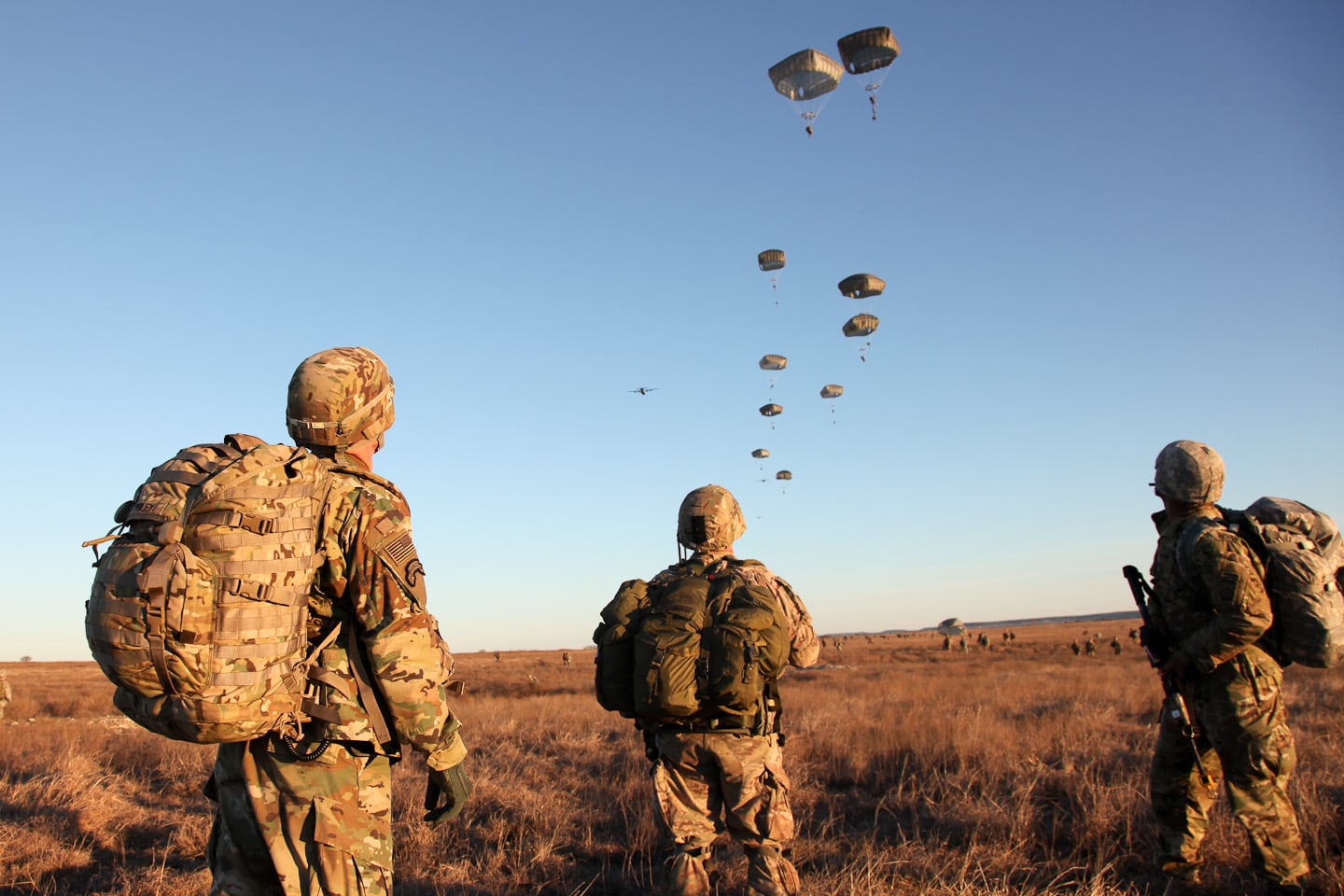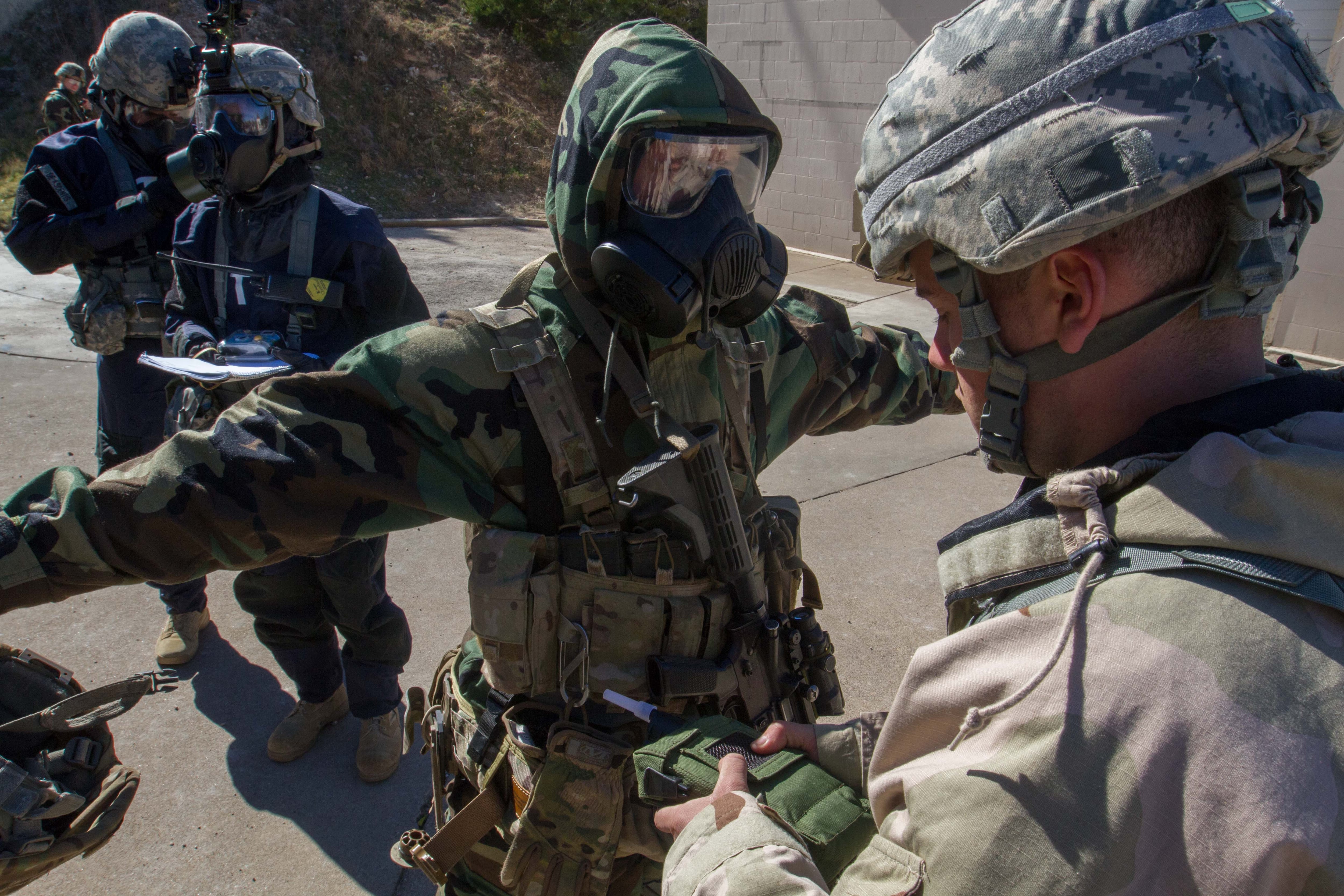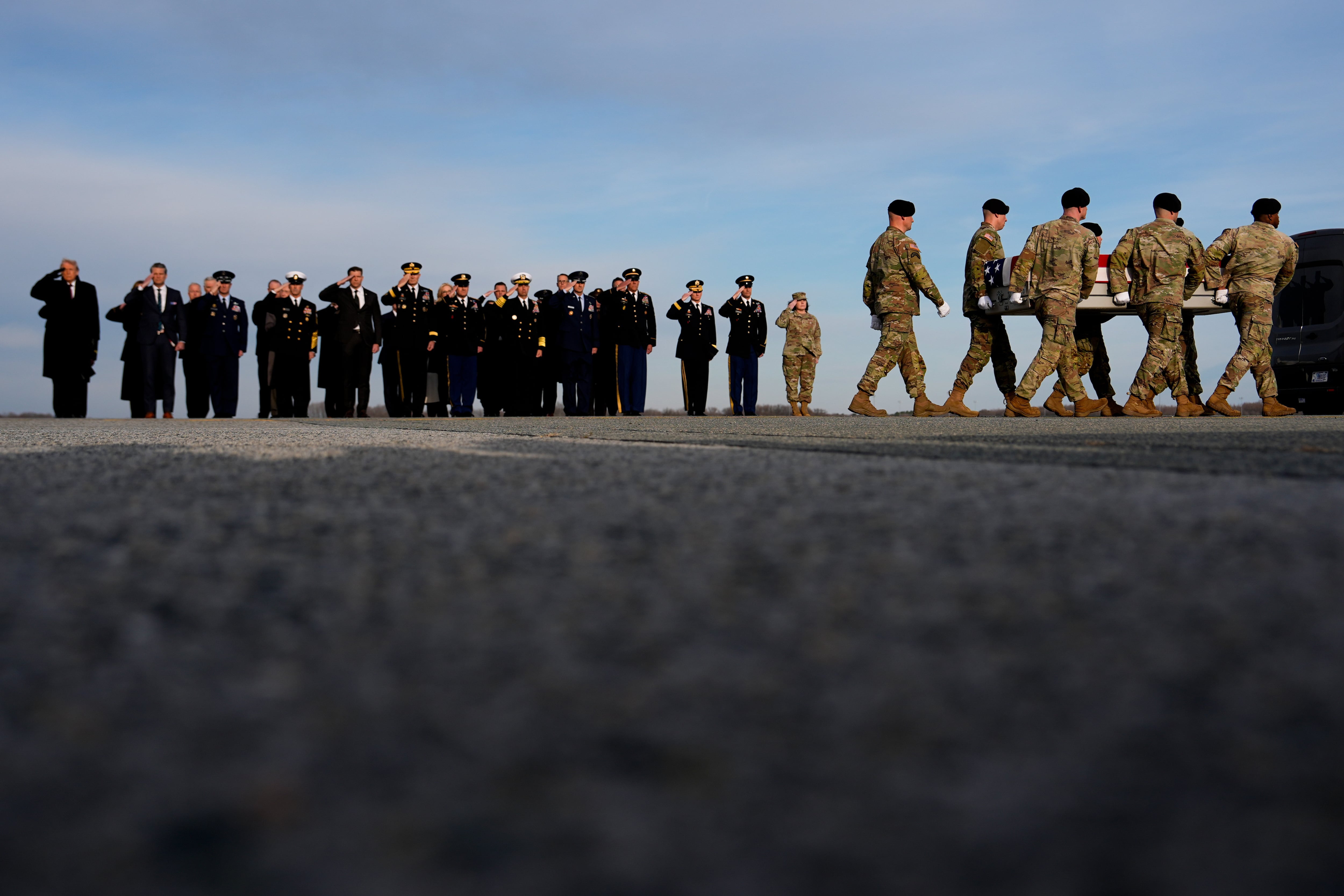The morning after the Super Bowl, an alert went out to paratroopers from the 82nd Airborne Division's 1st Brigade Combat Team.
They were to report to post immediately and prepare to deploy.
Less than 24 hours later, in the pre-dawn darkness, more than 600 paratroopers were jumping out of an airplane onto Fort Hood, Texas.
It was all just an exercise, but for the soldiers in 1st BCT, 82nd Airborne, no-notice, short-term alerts are once again part of their reality. The Fort Bragg, North Carolina-based brigade in December became the nucleus of the nation's global response force, taking over from the division's 2nd Brigade Combat Team.
As part of the GRF, paratroopers in 1st BCT must remain ready to deploy on short notice to respond to contingencies around the world. One battalion-sized element is expected to be able to deploy within 18 hours.
The recent exercise at Fort Hood, which lasted about a week, was the first brigade-level emergency deployment readiness exercise, or EDRE, the unit had conducted since assuming the GRF mission. The goal is to conduct at least one EDRE of this size or scale every quarter.
"It showed the flexible, agile leaders that we have within the 82nd and within the brigade combat team, to be able to be given a no-notice mission, and within less than 24 hours, they were jumping out of 13 aircraft into a foreign drop zone and conducting operations," said Col. Colin Tuley, commander of 1st BCT.

Paratroopers from 1st Brigade Combat Team, 82nd Airborne Division conduct an airborne operation Feb. 9 over Fort Hood, Texas.
Photo Credit: Staff Sgt. Javier Orona/Army
The 82nd Airborne has long shouldered part of the global response force mission, even throughout the wars in Iraq and Afghanistan. As the back-to-back warzone deployments eased, the division has been able to step up its focus on the GRF mission, but it still remains busy.
Much of the division's 3rd BCT deployed to Iraq last January as part of the United States' mission to defeat the Islamic State terror group. At the same time, its 1st BCT was resetting after deploying soldiers to Afghanistan.
This forced 2nd BCT to shoulder the GRF mission for more than a year. The goal is to be able to do eight-month rotations, and the division likely won't reach that goal until after 1st BCT's current rotation, leaders said. The current 1st BCT rotation is expected to last just shy of one year.
The Army's recent brigade combat team reorganization, which added a third maneuver battalion to each BCT, among other capabilities, has helped with the longer GRF rotations, said Brig. Gen. Brian Winski, deputy commanding general of the 82nd Airborne.
"They're sizeable enough and they have the capacity to maintain those rotations, and they can sustain readiness during the course of these long GRF cycles," he said.
But leaders remain careful to ensure soldiers are managed properly so they're not over-stressed.
Each battalion in the brigade rotates, typically for eight weeks at a time, at the highest level of readiness. If needed, this battalion would be required to report, if called, within two hours and be ready to depart within 18 hours.
"It's managed by leaders so you don't over-stress the system or over-stress the paratroopers over a length of time," Tuley said, adding that he's also mindful of the stress on his staff.
"It's something I take very seriously because I understand the implications if we don't manage it," he said. "To me, it's leader business. Leaders have to go be involved in managing the pace of the paratroopers and the pace of the leaders and staff."
The Army has ensured the 82nd Airborne has the resources it needs to maintain a high level of readiness for the GRF mission, Winski said.
"With the chaotic fiscal situation that [the Defense Department] and the Army face, we have the good fortune of being very high priority in terms of budgeting and being resources to execute things like the EDRE we did last week," he said. "It's important because we have to be ready to jump, fight and win tonight."
Paratroopers in 1st BCT were able to participate in three combat training center rotations last year as they prepared to take on the GRF mission, Tuley said.
"It was great training that kept us at peak readiness," he said. "Combat training centers are the bedrock. You're not going to find a better training resource than at the CTCs."

Col. Colin Tuley, commander of 1st Brigade Combat Team, 82nd Airborne Division watches as his paratroopers descend onto Antelope Drop Zone Feb. 9 at Fort Hood, Texas.
Photo Credit: Staff Sgt. Javier Orona/Army
While the GRF has been receiving the resources it needs to maintain its edge, Winski said he is more concerned about any follow-on forces that may be called up to replace the initial flow of forces.
"We're resourced, but it's critically important that the entire Army is resourced appropriately so we're all at the right level of training and readiness for combat," he said.
For the EDRE at Fort Hood, paratroopers from 1st BCT tested not only their readiness to deploy but the various systems and organizations at Fort Bragg designed to get them out the door quickly, Tuley said.
Once the soldiers were alerted, they were loaded onto seven C-17s and six C-130s. They rigged in-flight and jumped into Fort Hood. While about 640 paratroopers jumped into Fort Hood, about 900 in all participated in the EDRE on the ground.
The brigade also dropped several heavy equipment platforms, including artillery pieces, command and control vehicles and the soldiers' supplies for the week, Winski said.
The division also brought AH-64 Apaches from Fort Bragg. The helicopters were flown in on C-17s. Once the planes landed on Fort Hood, the soldiers had the helicopters up and flying in "a matter of a couple of hours," Winski said.

Pfc. Barrett Harrington of C Company, 2nd Battalion, 504th Parachute Infantry Regiment, uses a chemical detector to check a fellow paratrooper for contamination after a simulated chemical weapons mission Feb. 10 at Fort Hood, Texas.
Photo Credit: Sgt. Alexander Skripnichuk/Army
On the ground, the paratroopers linked up with soldiers from 2nd Battalion, 7th Cavalry Regiment, who also are part of the global response force.
"That was good for us, to better understand how to plan, coordinate and synchronize the capability that that element brings to the fight," Tuley said. "Nothing replicates training together in a tough operating environment."
The soldiers also conducted an air assault mission supported by Army Reserve UH-60 Black Hawk and CH-47 Chinook helicopters, Winski said.
To cap the EDRE, the paratroopers were flown back to Fort Bragg, where they jumped onto Sicily Drop Zone.
The EDRE was "a huge success," Tuley said.
"Not just because of the airborne operation and the tactical operations on the ground, but it was huge success because it validated many of our readiness aspects of outloading an element of this size," he said.
The 82nd Airborne takes the GRF mission very seriously, Winski said.
"If the call comes, they're not going to ask us 'when can you be ready?'" he said. "They're going to ask us 'when are you leaving?' We've got to be ready tonight."
Michelle Tan is the editor of Army Times and Air Force Times. She has covered the military for Military Times since 2005, and has embedded with U.S. troops in Iraq, Afghanistan, Kuwait, Haiti, Gabon and the Horn of Africa.





